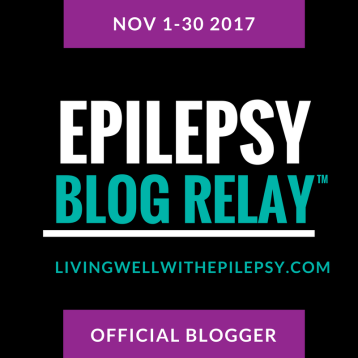This blog was written for the Living Well With Epilepsy Blog Relay, November 2017.
When seizures enter a child’s life, families coping with a new epilepsy diagnosis begin hearing others refer to the family as “adjusting to their new normal”. By “new normal” they mean a new life which, instead of being characterized by random medical emergencies, is now characterized by regular (sometimes, daily) battles with seizures, medications, and side effects. Included within the “new normal” definition are all the experiences and emotions that go along with those changes: doctor visits, hospital stays, tests, fear, courage, grieving, loss, new diets, new stamina levels, new ways of learning how to do normal things (like swim, bathe, bike, cook, and treat common colds).
When others feel the family has had enough time to adjust (a subjective, and often uneducated, judgment call), some begin to equate their intermittent medical challenges with the family battling epilepsy’s routine ones. Their “new normal” and the healthy family’s occasional flus and broken arms are both viewed as just plain “normal”.
Unfortunately for anyone battling epilepsy, this all-encompassing definition of normal results in decreased awareness of what is actually involved in living life differently than others, when seizures are not temporary or easily tamed. When a perspective acknowledging medical differences is lost, so are efforts to raise awareness, increased lobbying for medical cures, and elevation of basic human compassion for those who seize routinely. For those reasons, I am not a fan of defining any child’s experience with epilepsy as normal.
Let me explain. Normal is when a child can play, swim, climb, make friends, attend school and camps, participate in team sports, music or theater, pursue whatever career they dream, travel, etc., without seizures, medications, awful side effects, or stigmas swinging random wrecking balls at every pursuit. Normal is when a child’s biggest stressors are relationships, academic tests, game days, or career decisions. It’s knowing those stressors may cause lack of sleep and tears, not life-threatening complications. Normal is planning the family calendar with the expectation that most of the events will be made, not the knowledge epilepsy may steal half. Normal is realizing a child will miss only a few, planned, fun events a year due to strep or a sprained ankle, not a child routinely exchanging their dream events for another stint in the hospital. Normal is taking driver’s ed and buying a first car. Normal is proms and concerts, home-runs and touchdowns, not surgeries, labs and routine EEGS. Normal, for a child, is not knowing their own blood type. Normal is not having a healthy toddler emulate seizures because they want attention like their older sibling. Normal is going to bed knowing the likelihood of a son/daughter dying in their sleep is slim, not elevated. Normal is not having a pediatric neurologist on your speed dial list.
Do kids with epilepsy fight the disorder to perform regular childhood activities well? Absolutely. Does that make their experience normal? No. Way. In addition to overcoming the anxiety of seizures interrupting their attempts at normalcy and cultivating extreme courage to not let epilepsy rob them of their ambitions, a child with epilepsy battles discrimination, ridicule, bullying, ignorance, and callousness to participate in normal childhood activities, while healthy children may take both ability and opportunity for granted.
So, as we raise awareness this month, let’s redefine terms and steer the conversation toward better enlightenment.
Children with epilepsy, and the families battling alongside them, are not normal: They are warriors.
Their lives are not normal: They are extraordinary.
They aren’t adjusting to a new normal: They are fighting for cures.


